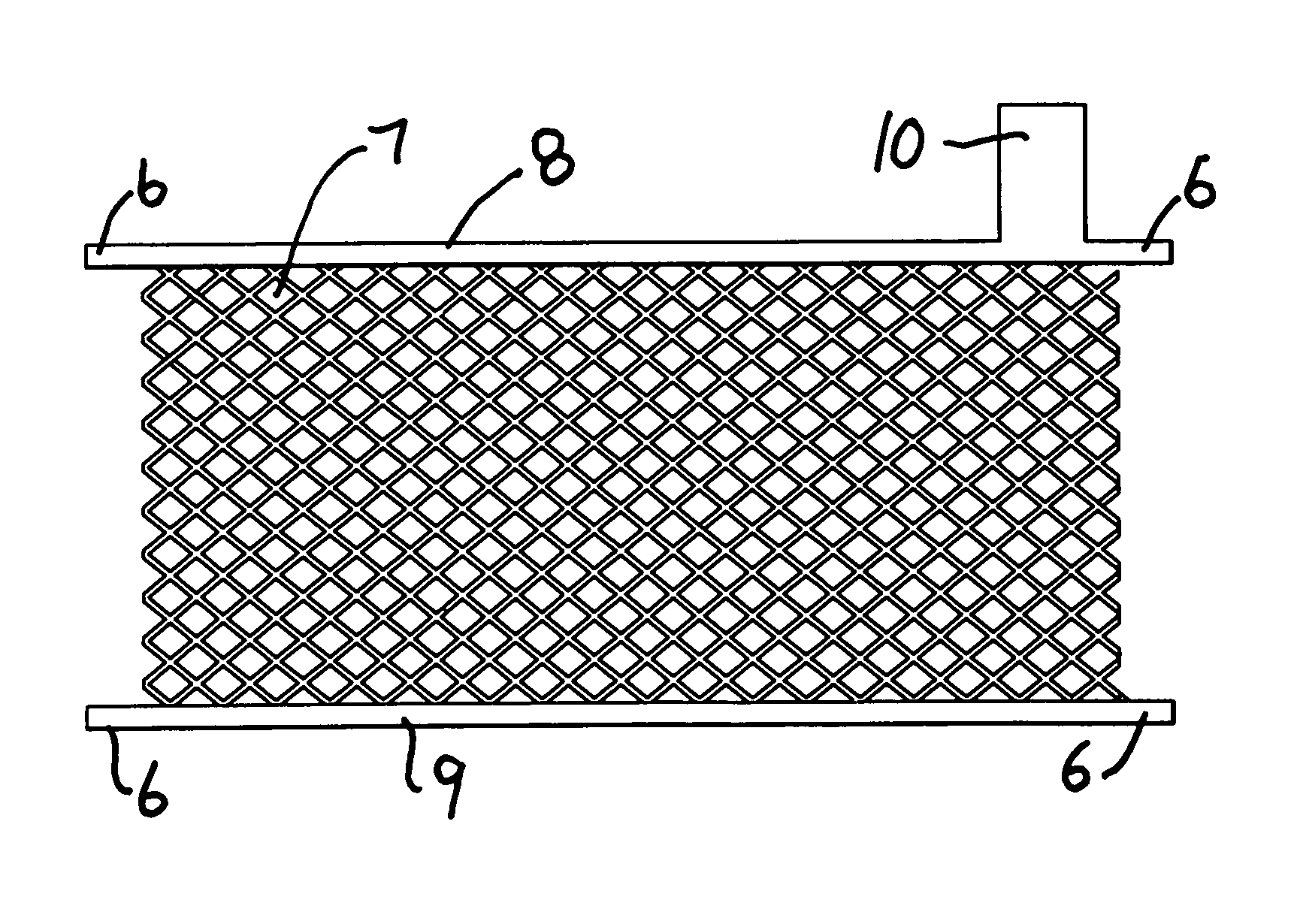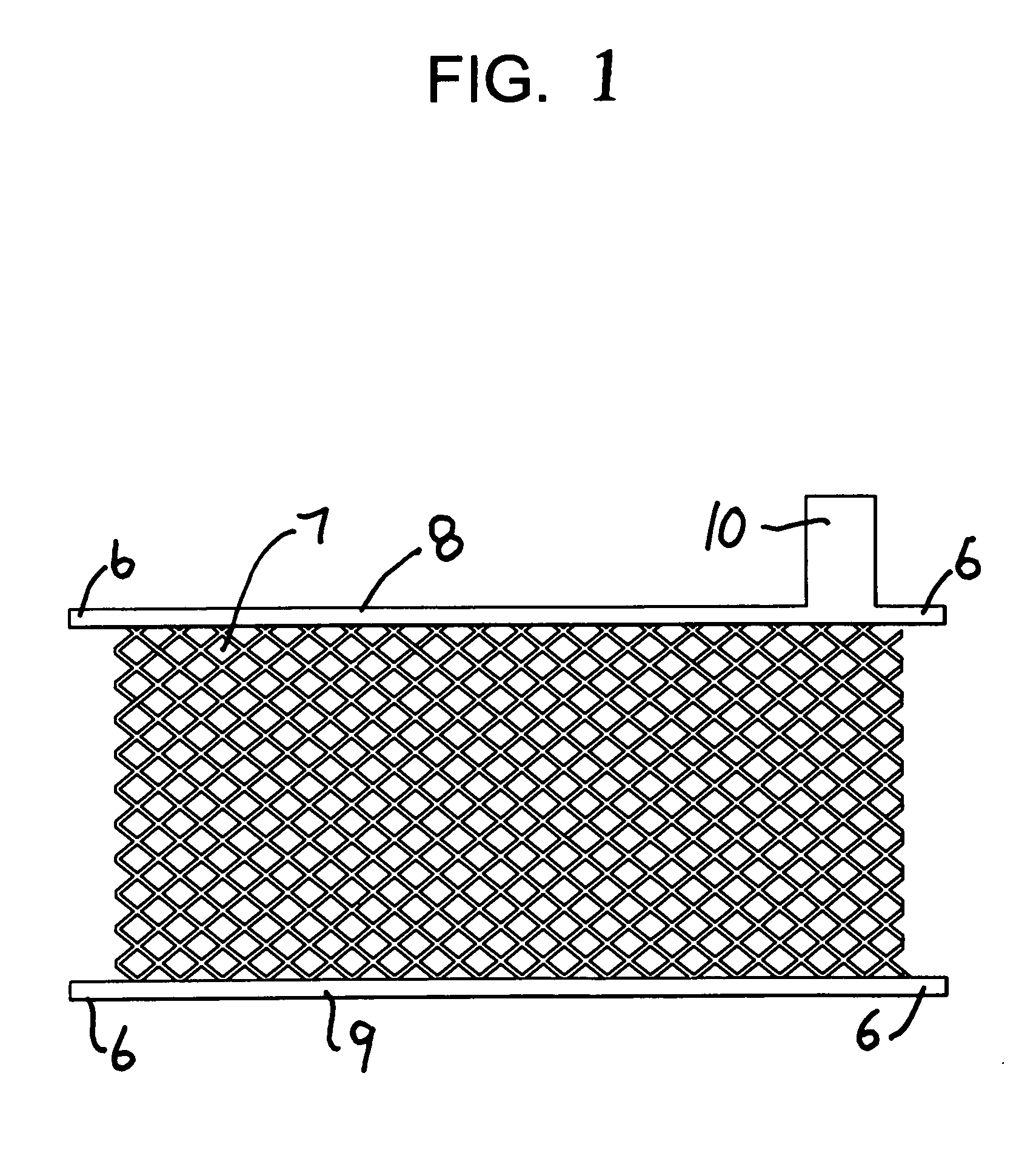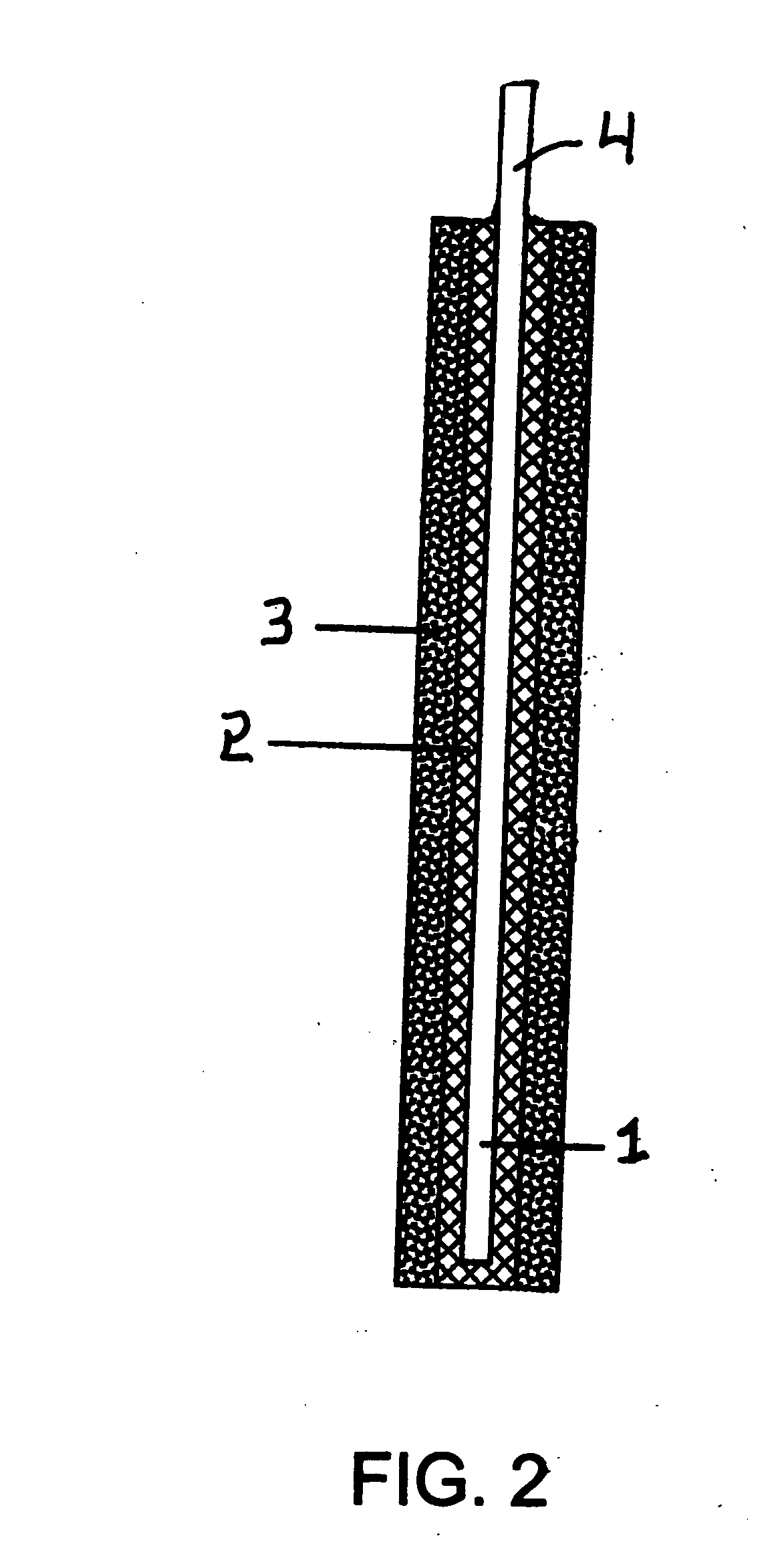Lead acid battery with titanium core grids and cabon based grids
a lead acid battery and titanium core technology, applied in the direction of batteries, secondary cell details, cell components, etc., can solve the problems of grid corrosion, battery paste flaking, non-adhesion, etc., and achieve the effect of reducing air pollution and saving gasolin
- Summary
- Abstract
- Description
- Claims
- Application Information
AI Technical Summary
Benefits of technology
Problems solved by technology
Method used
Image
Examples
first embodiment
[0045]This first embodiment is a long-life battery especially for stop-start cars. It uses relatively thicker negative and positive grids and thicker separators. The negative carbon based grids are each 2 mm thick. The positive grids use titanium cores of not flattened expanded metal 2 mm thick, copper and tin flash electroplated layers, and hot dip lead coatings of 200 microns (each side) and 0.2 mm over-paste (each side) for a total thickness of 2.8 mm. The separators are glass mats each 1 mm thick. The battery uses 60 grids and 30 separators for a total thickness of about 174 mm. This easily fits in a standard length 207 mm battery case (DIN 53621) and weighs less than a standard auto battery.
second embodiment
[0046]This second embodiment is a “super-battery” especially for electric cars (EV) and plug-in hybrid cars (PHEV). It uses thin grids and thin separators. The positive grids have a titanium core which is 0.35 mm thick of flattened expanded titanium alloy. A thin coating of lead of 75 microns (each side) is dip coated on electroplated flash coatings of copper and tin. The over-paste is 0.1 mm (each side), for a total thickness of about 0.71 mm.
[0047]The separators are 0.5 thick and the negative grids are 1 mm thick. The separators are plastic envelopes each 0.5 mm thick. The battery uses 180 grids and 90 separators for a total thickness of about 200 mm. This easily fits in a standard length 275 mm battery case (DIN 56311) and weighs less than a standard auto battery. It should provide 2.1 KW. A pack of 5 such batteries should provide 10.5 KW to drive a converted Prius 40 miles using only electric. The pack should cost less than $2000, which is ⅕ the cost of a Li-Ion battery pack of ...
PUM
| Property | Measurement | Unit |
|---|---|---|
| thickness | aaaaa | aaaaa |
| thickness | aaaaa | aaaaa |
| length | aaaaa | aaaaa |
Abstract
Description
Claims
Application Information
 Login to View More
Login to View More - Generate Ideas
- Intellectual Property
- Life Sciences
- Materials
- Tech Scout
- Unparalleled Data Quality
- Higher Quality Content
- 60% Fewer Hallucinations
Browse by: Latest US Patents, China's latest patents, Technical Efficacy Thesaurus, Application Domain, Technology Topic, Popular Technical Reports.
© 2025 PatSnap. All rights reserved.Legal|Privacy policy|Modern Slavery Act Transparency Statement|Sitemap|About US| Contact US: help@patsnap.com



